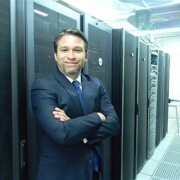

HPE BladeSystem and Dell PowerEdge M are major competitors in the server infrastructure category. HPE BladeSystem appears to have the upper hand in flexibility and modularity, while Dell PowerEdge M offers strong performance values and competitive pricing.
Features: HPE BladeSystem is notable for its high configurability, modularity, and reliable performance. It makes server management easy with the iLO feature for powerful remote administration. Dell PowerEdge M stands out with its efficient virtualization and robust compute performance, including iDRAC for effective remote management capabilities.
Room for Improvement: HPE BladeSystem faces challenges with limited scalability and outdated chassis, along with demands for better manageability and feature-rich interfaces. Dell PowerEdge M could benefit from enhanced network configuration options, streamlined VLAN management, and support for AMD CPUs and hyper-converged options.
Ease of Deployment and Customer Service: HPE BladeSystem allows for multiple deployment options, including hybrid cloud solutions, although some users report inconsistent technical support and prolonged response times. Dell PowerEdge M is mostly deployed on-premises with steady customer service, though user experiences with support quality may vary. Notable improvements in Dell's support have been observed.
Pricing and ROI: HPE BladeSystem is perceived as a high-cost solution, but it's justified by potential energy savings and operational efficiency yielding a strong long-term ROI. Suggestions have been made for a more competitive pricing structure. Dell PowerEdge M offers more affordable pricing, especially when compared to high-end solutions like IBM, providing good value for performance, and caters to budget-friendly options for medium enterprises.
They provide excellent help when needed.
I do not have to call HP support frequently, which indicates its reliability.
There are differences in security configurations, particularly in SNMP and SNMP3, between HP ILO and iDRAC.
In general, there is a 10% to 15% price gap compared to competitors.
In general, there is a 10% to 15% price gap compared to competitors.
The ease of troubleshooting and managing through remote access, using tools like iDRAC, significantly saves me time.
The feature I find most valuable is the ease of use.


The Dell PowerEdge M-Series blade servers address the challenges of an evolving IT environment by delivering leading enterprise classfeatures and functionality. The M-Series delivers a unique array of options configured to meet the needs of your IT environment both now and in the future.
HP ProLiant BladeSystem share power, cooling, network, and storage infrastructure via the blade enclosure. Since equipment is not needed for each server, you get a dramatic reduction in power distribution units, power cables, LAN and SAN switches, connectors, adapters, and cables. And you can add the newest-generation technologies by simply changing individual components.
We monitor all Blade Servers reviews to prevent fraudulent reviews and keep review quality high. We do not post reviews by company employees or direct competitors. We validate each review for authenticity via cross-reference with LinkedIn, and personal follow-up with the reviewer when necessary.